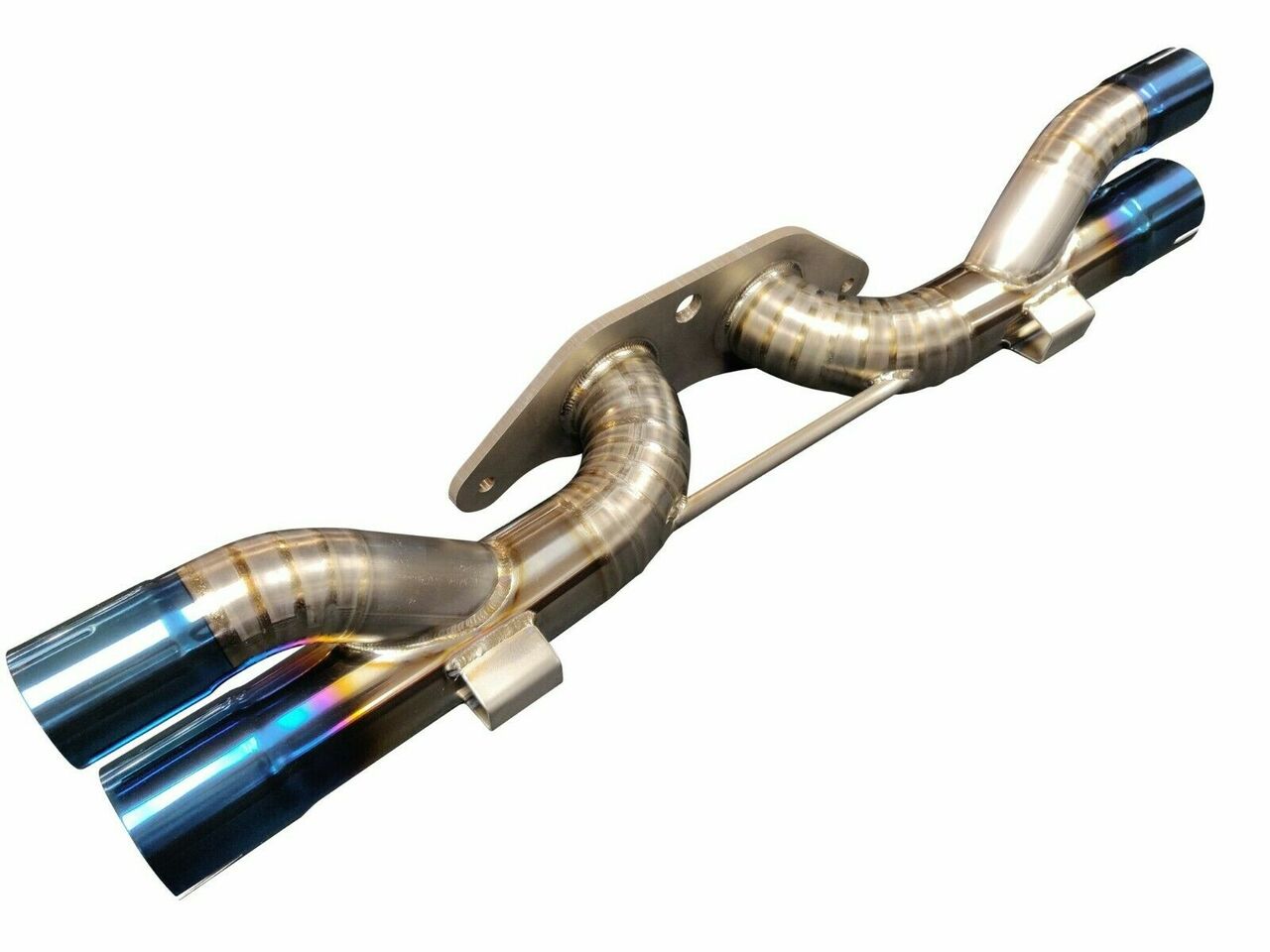A muffler delete, as the name implies, deletes your muffler or mufflers on your car or truck. Essentially a muffler delete replaces your factory mufflers with straight piping that has exhaust tips at the end. I hear people often ask what muffler deletes are, how they work and how much they cost, so it leads me to believe that this topic is a pretty popular one. Therefore, I’d like to cover the main points of muffler deletes in what I believe is one of the more comprehensive guides online. If you have anything to add or any comments at all, please leave them below – I’d love to hear from you!
Muffler Delete Pro’s and Con’s
Muffler Delete Pro’s:
- Lightweight compared to stock muffler
- Improves sound
- Many different tip styles
- Inexpensive upgrade
- Aggressive exhaust note
- Cheapest aftermarket muffler section (axle-back muffler)
- Easy to install
- Easy to go back to stock
Muffler Delete Con’s:
- Increases drone
- Can be too loud (louder exhausts do not exist)
- Local Laws might not allow it
- Popular way to attract cops
This exhaust modification changes the whole driving experience.
A muffler delete comes in various materials, such as stainless steel or titanium. Titanium is the lighter of the two, and even this high quality exotic material will still be very inexpensive when you compare it to a full titanium exhaust. Usually the factory muffler is a cheaper aluminized muffler with tons of packing and can weigh 60 lbs +. Compare it with a stainless muffler delete at average of 15 lbs and a titanium muffler delete at an average of 8 lbs.
Because this modification is so simple, just flanges, piping and exhaust tips, most manufacturers offer a lifetime warranty.
Does a muffler delete affect smog or emissions?
A muffler’s purpose is to literally muffle noise. Unlike a catalytic converter, a muffler does not affect emissions output – so deleting a muffler will not affect smog. However, some local laws check for a working muffler and a vehicles sound levels at smog, so you might not be able to pass a smog check if this is the case. Check your area to see if it’s legal for public roads.
How much power can I gain?
It all depends on how restrictive your OEM rear muffler is. If you have a naturally aspirated car (no turbo or supercharger), your gains will typically be less because your engine doesn’t pump out as much exhaust. However, on a supercharged or turbo car, if the muffler creates a lot of back pressure, then freeing up that pressure and exhaust flow can increase horsepower and torque by 5% or more – decent power gains!
Does the muffler delete sound bad?
If your car is turbo, removing the OEM turbo muffler can have some mixed reviews. Sometimes, doing so can let you hear the turbo spinning, like on an Infiniti Q50. Other times, on a more complicated exhaust system such as on an F80 M3 or F82 M4, doing a muffler delete can cause the exhaust to sound worse than stock. If you want aggressive sound from a simple performance exhaust, a muffler delete is for you. Check out some YouTube videos to make sure you like the sound for your specific vehicle.
Is this the same as a resonator delete?
No… or, maybe? Some cars have an axle back (exhaust that is only from the rear wheels, back) that is nothing more than a resonator. A resonator is different because it doesn’t muffle the exhaust noise, it simply changes its resonance, adjusting its tone, usually to be less high pitched and raspy. Think to the example of an E46 M3 which has available anti-rasp pipes, which are essentially resonators.
However, if your vehicle has a muffler in a different area, not in the rear, then the aftermarket likely doesn’t make a muffler delete for your car. Some rare cases, like a Ram 1500 or a Charger might have a mid muffler delete, which works the same way.
Does it look aftermarket?
If your rear bumper shows your factory mufflers then deleting them would leave that area looking a bit empty. Usually, these come with available tips in 4 different styles:
- Stainless Steel Single Wall Exhaust Tip
- Stainless Steel Double Wall Exhaust Tip
- Titanium Burnt Blue Single Wall Exhaust Tips
- Titanium Burnt Blue Double Wall Exhaust Tips
These styles will let you pick the type of look you’re going for. Some also change the tip style. For exhaust, quad to dual or dual to quad tips.
Will I get a check engine light?
Usually not. Almost no vehicle currently checks to see if a muffler is functioning. If you have a check engine light, your issue is elsewhere, 99.9% of the time.
Are these hard to install? Can I DIY?
Got basic hand tools? If so, you can install these. As easy as unbolting the old, and bolting on the new. On newer vehicles, the nuts and bolts won’t give you many problems. On older vehicles, you might need to let the nuts and bolts soak overnight in some WD40 or Liquid Wrench. Additional modifications are for the most part not required.
I’d love to hear from you
The sound a car makes is very important to true enthusiasts. And while the sound itself is very subjective, I would love to get your reviews on muffler deletes if you have experience with them. Please comment below on what car you have, what muffler delete you have and your review. It would help other misshift.com readers in their journey in deciding if a muffler delete is right for them.









